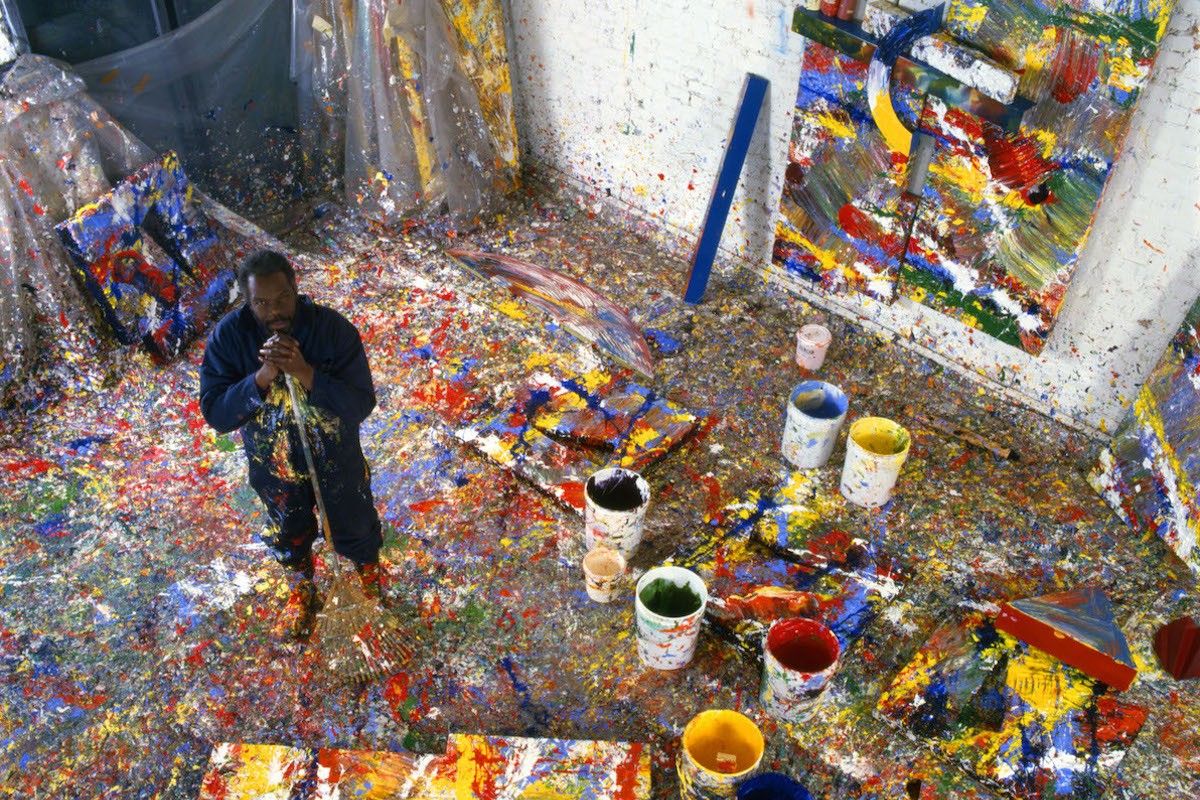
Sam Gilliam painting studio
Portrait of American painter Sam Gilliam as he poses in his paint-splattered studio in Washington DC in 1980. Photo Credit: Anthony Barboza/Getty Images
To continue reading
Create a free account or sign in to unlock more free articles.
By continuing, you agree to the Terms of Service and acknowledge our Privacy Policy
Register
The content is free, but you must be subscribed to Okayplayer to continue reading.
THANK YOU FOR SUBSCRIBING
Join our newsletter family to stay tapped into the latest in Hip Hop culture!
Login
To continue reading login to your account.
Forgot your password?
Please enter the email address you use for your account so we can send you a link to reset your password:

For hundreds of years, Black people have used art to tell stories about their history, and the struggles that exist throughout each generation. With each stroke, came a different form of expression unique to the artist’s personal experience, but specific to their culture as a whole. From the times of slavery, to the deceptive — and more often blatant — types of racism that African Americans suffer from today, the Black artist has become a necessary messenger for the social climate not only in the United States, but the entire world.
Transitioning from the civil rights movement of the ‘60s and the unapologetic pride of the ‘70s, Black art in the 1980s saw a significant shift in technique and creativity. The socioeconomic disadvantages for people of color became painfully evident as the decade progressed, and the artists of the time captured these moments on canvas, along with other forms of media. Many of the artists’ works were a deep exploration of a country in transition, but still a country unwilling to move on from the prejudice that it was built upon.
Unfortunately for many, Black art in the ‘80s begins and ends with the late, greatJean-Michel Basquiat. His work, which focused on his experiences in the community, challenged the nation’s political structure and its systems of inequality and classism. As notable as Basquiat is, and will continue to be, it is important to highlight the other artists of color whose contributions defined an era and laid the foundation for those who followed to be fearless in the way they create.
Here are 12 Black visual artists who were prominent in the '80s.
Jacob Lawrence (Painter) 1917-2000
Jacob Lawrence’s themes of African American lifestyle and moments of historical significance that existed in his art made him more than just a painter, but a modern-day griot and perhaps the most widely acclaimed Black artist of this century.
In a career that spanned over six decades, Lawrence’s work in the '80s included several commissions. He completed two for Howard University during this time:Explorations, a 40-foot-long mural made of porcelain on steel, and Origins, which focused on African American life and history.
The year 1986 brought about one of Lawrence’s most recognizable endeavors — screen prints of The Life of Toussaint L’Ovuerture, a series dedicated to the leader of the Haitian Revolution.
Carrie Mae Weems (Photographer/Mixed Media) 1953 –
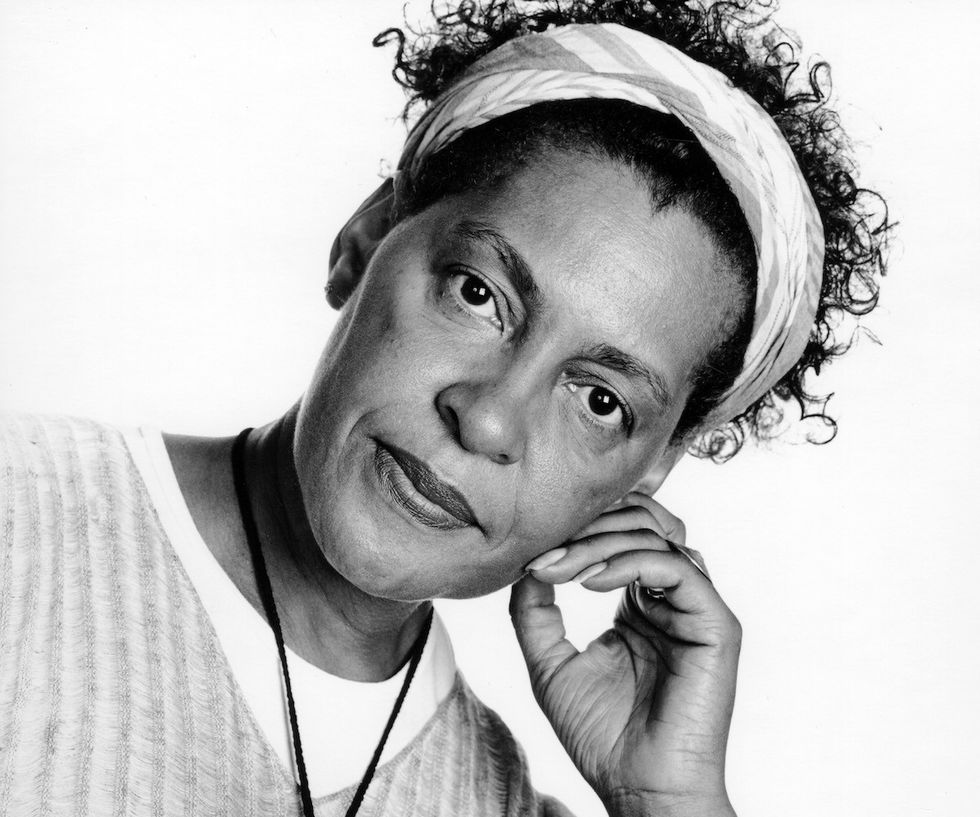
Nina Simone once said, “an artist’s duty, as far as I’m concerned, is to reflect the times.” Photographer Carrie Mae Weems' practice of activism in her work is a perfect representation of the statement. In her almost 40 years as an artist, she explored topics such as race, sexism, class, cultural identity, and her country’s flawed political system.
Weems developed a complex body of work which includes, fabric, text, audio, and digital imaging, as well as video and installations. She has long been considered one of the most influential contemporary American artists and has participated in numerous solo and group exhibitions at renowned museums such as Solomon Guggenheim and the Metropolitan Museum of Art in New York and the Centro Andaluz de Arte Contemporáneo in Spain.
Kerry James Marshall (Painter) 1955 –
Born in Birmingham, AL at the beginning of the civil rights movement — and later moving to the Watts neighborhood of Los Angeles prior to the riots OF 1965 — Kevin Marshall’s art expresses pain, the Black experience, and the beauty of African American life.
Primarily a painter, Marshall also experimented with different forms of media — ranging from comics to sculpture — to highlight the daily lives of Black Americans. His 1999 comic book series,Rhythm Mastr, depicted black superheroes, and was a response to the lack of characters of color in the comics he read as a child.
Gordon Parks (Photographer) 1912 - 2006
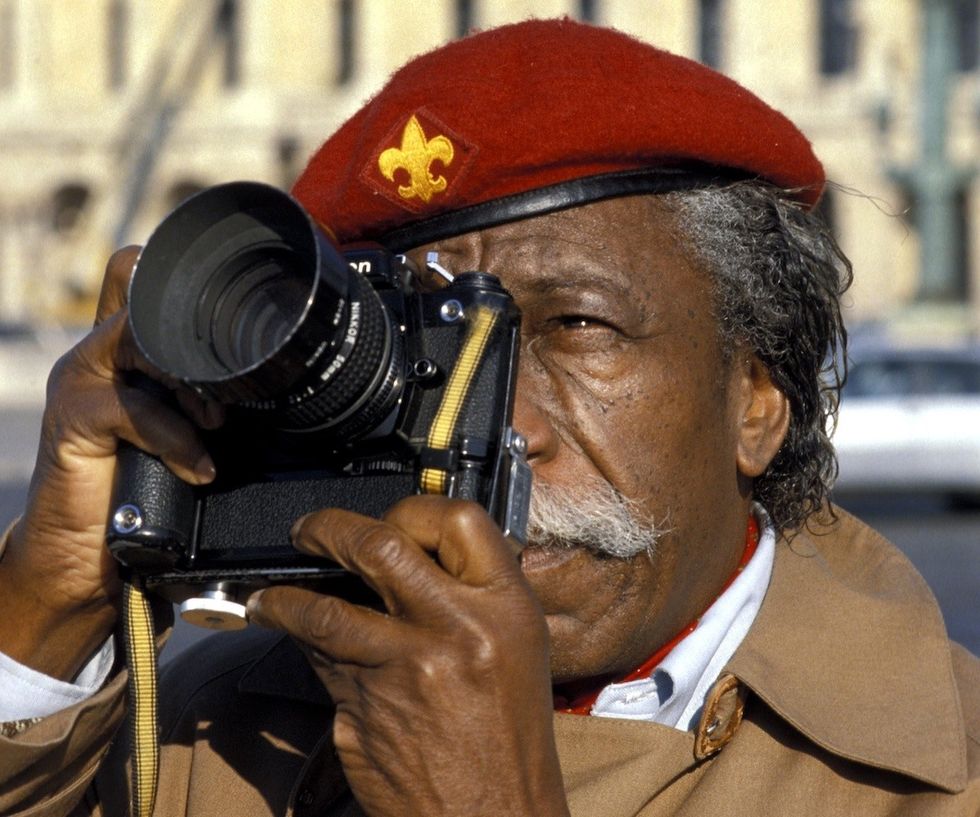
Gordon Parks was a photographer who saw that his camera could be used to combat poverty, racism, and other types of social injustices. He became became known for his captivating pictures of the civil rights struggle. Parks’ intimate photos of Dr. Martin Luther King, Jr. during his fight for freedom humanized the Black leader in the eyes of many. Parks also used hisphotography to give a voice to the disenfranchised minorities across the nation.
Faith Ringgold (Painter) 1930 –
Feminism, American history, politics, and activism are themes that appear frequently in Faith Ringgold’s work. Her art is created with the use of several types of media: including paint, sculpture, performance, and quilt work.
After being rejected by the male-only fine arts program at the City College of New York, Ringgold honed her skills alongside artists like Robert Gwathmey, Yasuo Kuniyoshi, and Robert Blackburn. In subsequent years, she went to Europe and began working on Dancing at the Louvre, which was part of her series of decorative quilts.
Ed Clark (Painter) 1926 – 2016
Stylistically, Ed Clark was one of a kind. His abstract paintings were created with the use of a paint brush the size of a large broom. Born in New Orleans and living in artistically important cities — specifically Chicago and Paris — Clark sharpened his skills under the tutelage of Ossip Zadkine.
Clark’s work can be seen in the Art Institute of Chicago, the Detroit Institute of Arts, and the Studio Museum in New York.
Romare Bearden (Mixed Media / Collage) 1911 – 1988
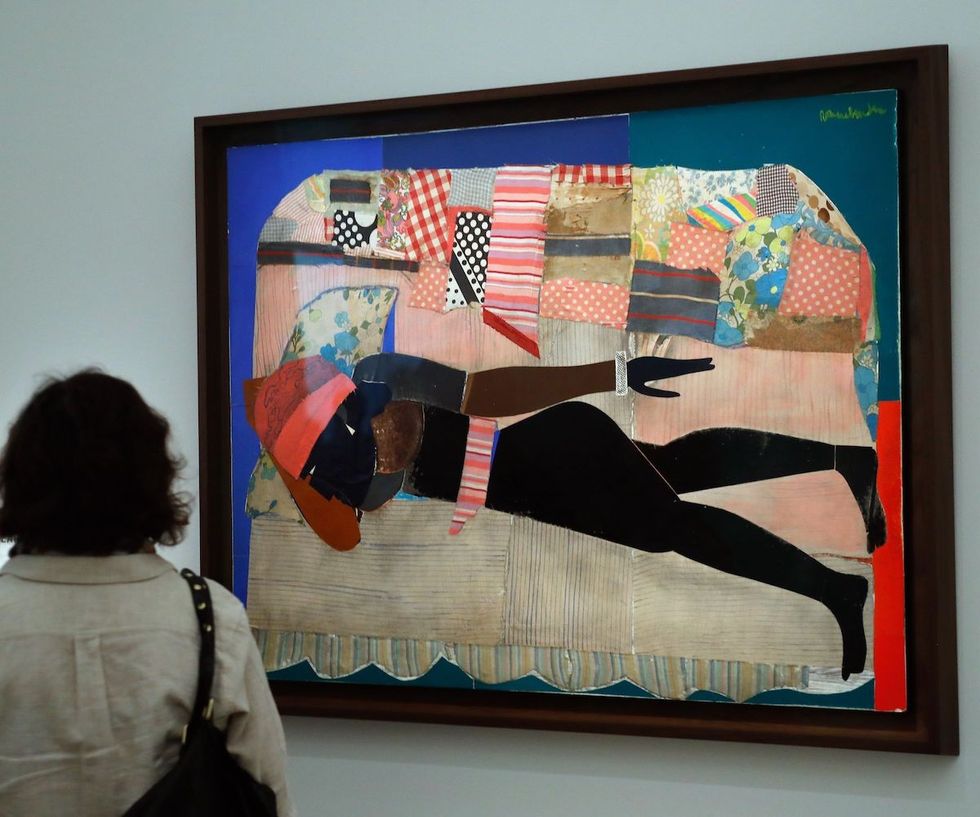
Romare Bearden’s work was primarily collaged paintings blended with Black culture in America. Born in Charlotte, North Carolina, Bearden focused on detailing the African American experience in a classical sense, especially in the south.
Bearden has long been recognized as the one of the most unique and creative artists of his generation. He dabbled with many forms of media, but he is most known for his beautifully layered collages, two of which were featured on the covers of TIME and Fortune Magazines.
Bearden’ssubway mural in Pittsburgh that he completed in 1984 was a labor of love, and an ode to his childhood.
Sam Gilliam (Painter) 1933 –
Inspired by jazz music, Sam Gilliam’s abstract paintings take on a series of emotions expressed through color and texture. His work can be described as large and fascinating, with many pieces stretching across ceilings or the walls of museums.
His emergence as an artist during the height of the civil rights era was symbolic of the transition of the art world. In 1968, Gilliam completedDouble Merge, two paintings brought together as one.
Gilliam has had many solo exhibitions around the world, with work showcased in Switzerland, Paris, London, New York, Washington, D.C., and Chicago, just to name a few.
Barkley Hendricks (Painter) 1945 – 2017
Due to his talent behind the camera, Barkley Hendricks became known for hispicturesque paintings of black figures. His work paid homage to the fashion of African Americans throughout several decades. His portrait pieces focused on capturing a variety of emotions the Black people experience on a daily basis.
Hendricks’ work inspired contemporary artists such as Kehinde Wiley and Mickalene Thomas and are located in the collections of the National Gallery of Art in D.C., the Philadelphia Museum of Art, and the Tate Modern in London, among others.
David Hammons (Sculptor/Printmaker) 1943 –
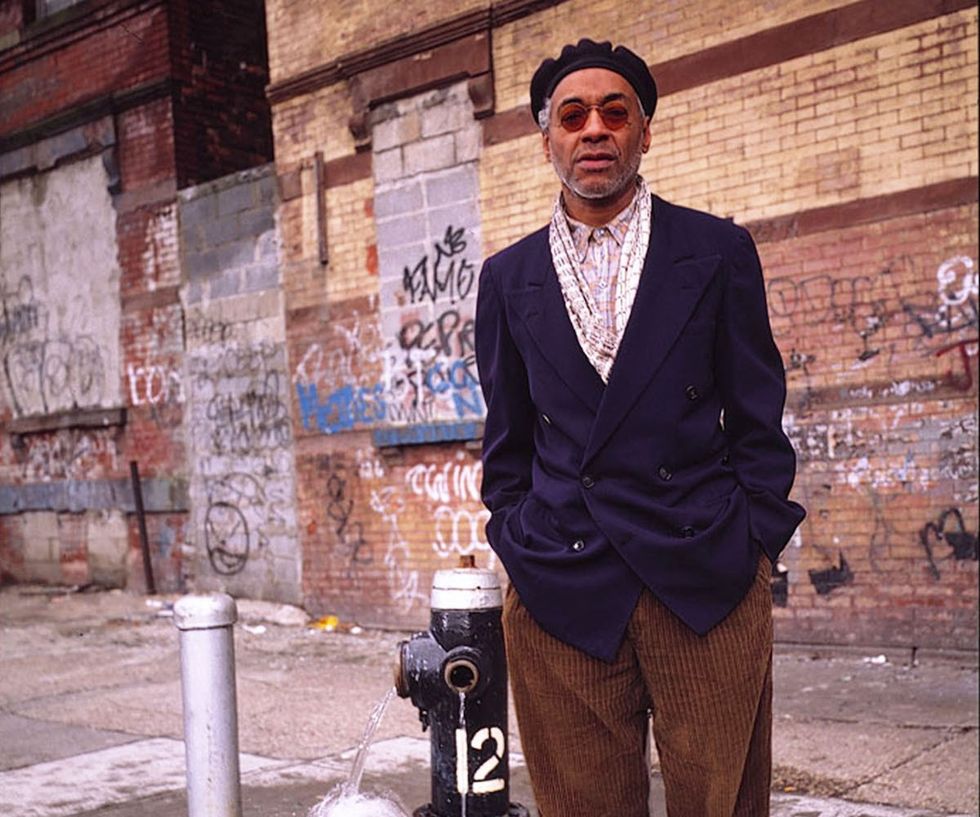
Throughout his career, David Hammons has shifted his style many times. A competent sculptor, printmaker, performance and installation artist, Hammons is known to tackle issues of race, class and the economic structure through his art.
Hammons rose to prominence in the 1970s and 1980s, and his work sometimes serves as satirical metaphors of the world around him. In 1986, he completed "Higher Goals," a collection of five telephone poles upwards of 20 feet, covered in beer bottle caps and topped with basketball hoops. This installation symbolized an escape from urban poverty.
Lorraine O’Grady (Conceptual Artist/Mixed Media) 1934 –
Lorraine O’Grady’s work over four decades has addressed important issues that directly affect women in the African American community. A writer, artist, and critic, O’Grady continues to explore black female subjectivity and the flawed social hierarchy that exists across countless cultures.
In the 1980s, O’Grady would use her alter-egoMlle Bourgeoise Noire as a protest to a segregated art world that excluded artists of color from mainstream inclusion.
Alison Saar (Printmaker/Sculptor) 1956 –
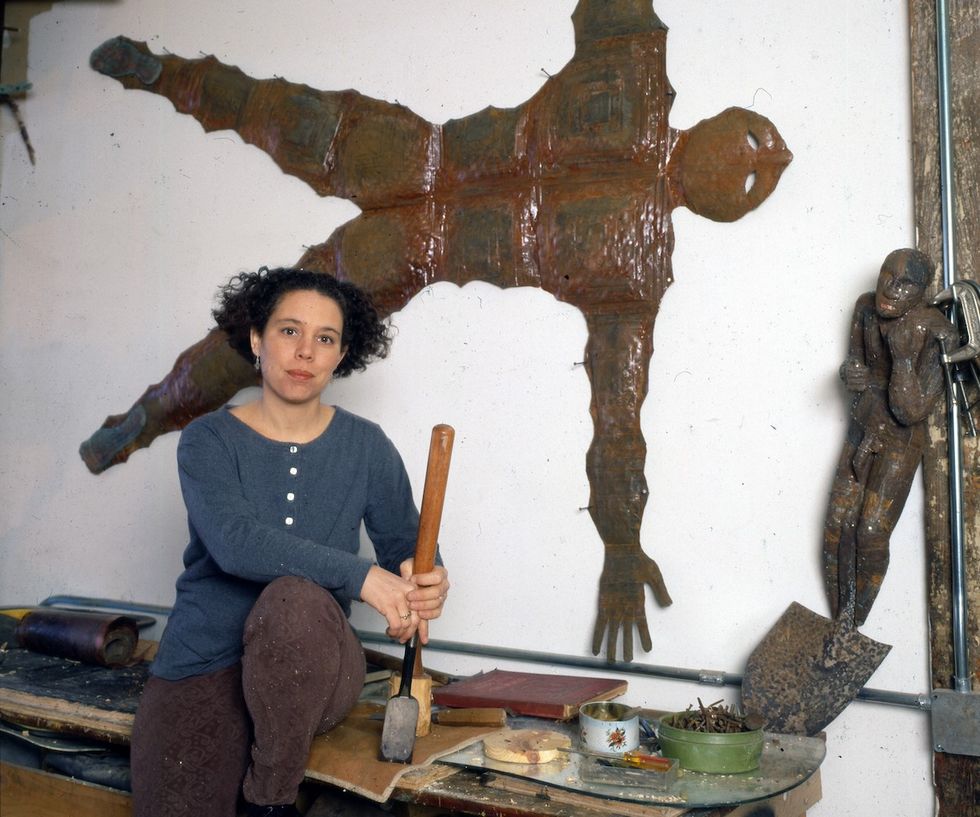
Alison Saar’swork reflects her own life experiences, focusing on Black female identity and themes such as race, gender, history, and the African diaspora. Her sculptures, installations and prints incorporate random objects such as wood, glass, and metal and serve as a representation of her eclectic upbringing.
Both of Saar’s parents were artists by craft, and she credits them with inspiring her to learn about other cultures outside of her own.
Her work can be found in Minneapolis’ Walker Institute, the Whitney Museum of American Art, the High Museum in Atlanta, along with museums and private collections throughout the United States.
__
Alena Marajh contributed and helped research this story.
Okla Jones is Music/Entertainment journalist, TV & Film, Fine Arts and Pop Culture critic from New Orleans, LA. His thoughts can be found at @coolhandoak.